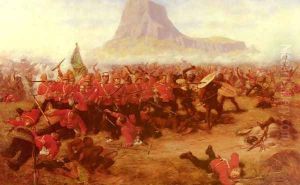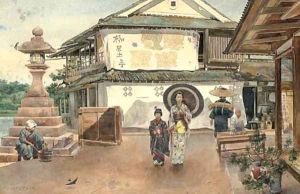Charles Edwin Fripp Paintings
Charles Edwin Fripp was a British artist, born in 1854 in South London. He developed a keen interest in art at a young age, influenced by the vibrant art scene in London during the latter half of the 19th century. Fripp's early education in art came from his surroundings and the cultural milieu of the city, eventually leading him to formal studies. He studied at the Royal Academy Schools, a prestigious institution that nurtured many prominent artists of the time. His education there laid the foundation for his artistic career, emphasizing classical techniques and the importance of drawing from life.
Fripp's work is often characterized by its attention to detail, vibrant colors, and the ability to capture the essence of his subjects, which ranged from landscapes to historical scenes. He became particularly well-known for his depictions of military and historical events, a genre that was very popular in Victorian England. His paintings are noted for their realism and accuracy, attributes that gained him commissions from the British Army and recognition from high-profile military personnel.
In addition to historical subjects, Fripp also had a profound interest in landscapes, especially those of South Africa, where he traveled extensively. His journeys to the region were inspired by a mix of artistic and adventurous spirit, leading to a body of work that not only depicted the landscape's natural beauty but also its cultural and social complexities during a time of significant change and conflict.
Throughout his career, Fripp exhibited his work at various prestigious venues, including the Royal Academy of Arts in London. His contributions to the artistic representation of British colonial history and his unique portrayal of South African landscapes have cemented his place in the annals of British art history.
Charles Edwin Fripp passed away in 1906, leaving behind a legacy of work that continues to be appreciated for its historical value and artistic merit. His paintings are held in several important collections and museums, serving as a testament to his skill and dedication to his craft.

